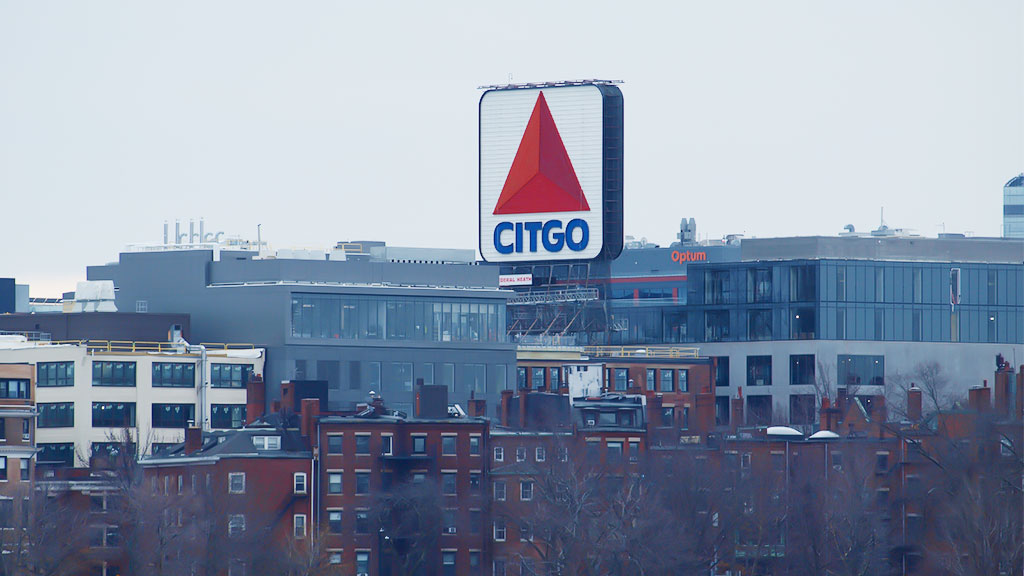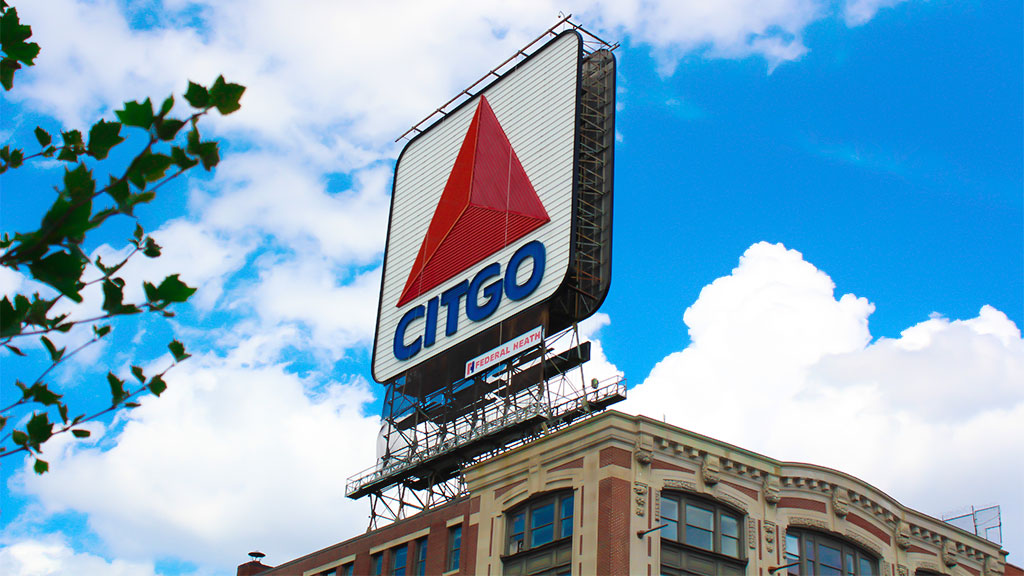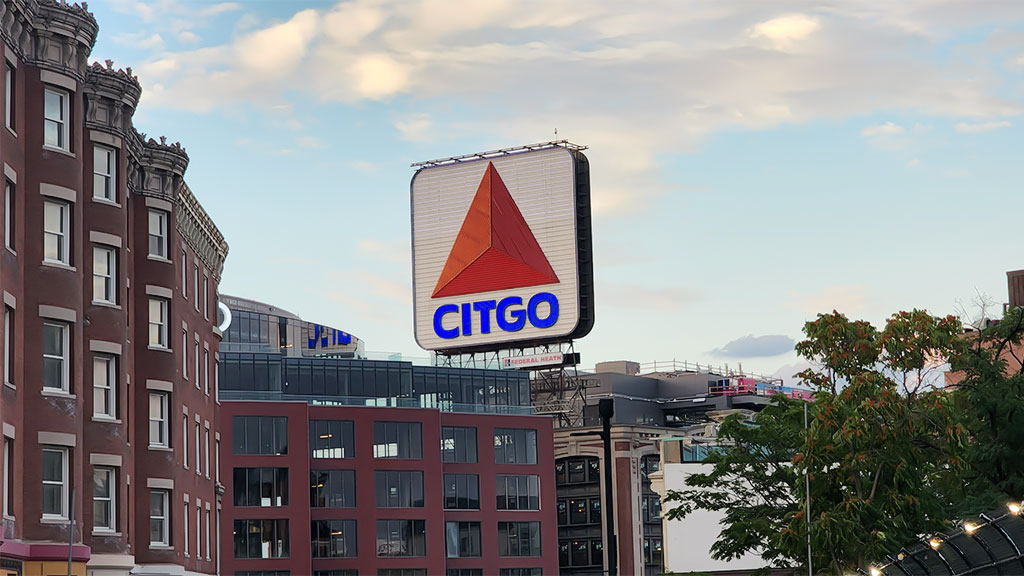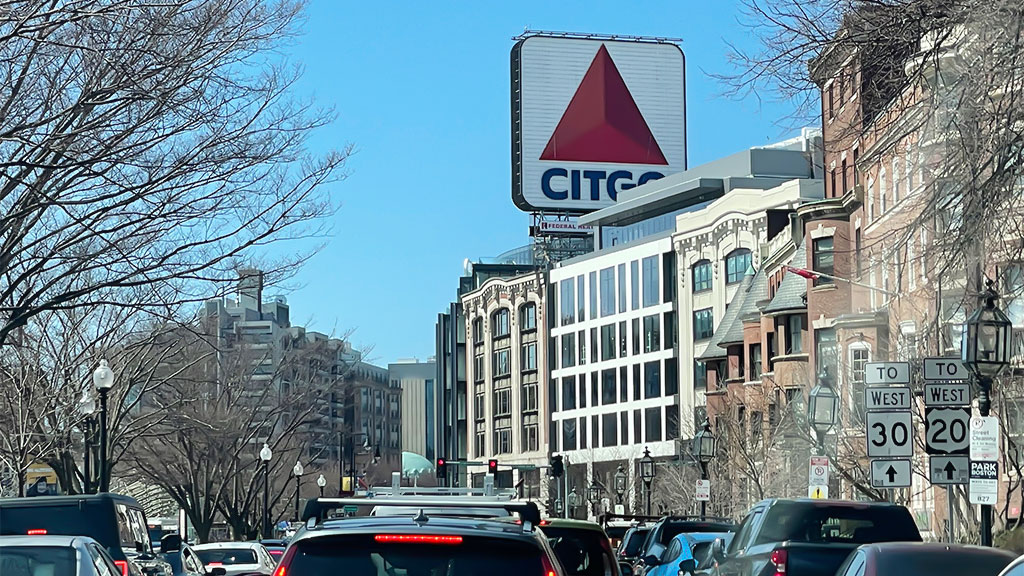Located in the heart of Boston’s skyline, the iconic CITGO sign stands as a beacon of history and nostalgia. For decades, this vivid symbol has illuminated the cityscape, capturing the essence of Boston’s spirit and charm.
The story behind the CITGO sign is not just about glowing lights; it’s a tale of community, resilience, and urban identity.
From its humble beginnings in the 1960s to becoming a beloved landmark, the CITGO sign has witnessed the evolution of Boston’s landscape.
With its bold colors and prominent location near Fenway Park, it has become a cultural touchstone for locals and visitors alike.
Exploring the history of the CITGO sign unveils a narrative that intertwines with the city’s growth and transformation, making it a cherished piece of Boston’s past and present.
Evolution of the Citgo Sign

The Citgo sign in Boston has a fascinating evolution that mirrors the city’s growth and cultural significance.
Let’s explore how this iconic landmark has transformed over the years.
Origins and Installation
Back in 1965, the Citgo sign was erected as a promotional tool for the Cities Service Company, now known as Citgo Petroleum Corporation.
Standing at 60 feet tall and 60 feet wide, the sign quickly became a recognizable feature in Boston’s skyline. It was installed to advertise the nearby Citgo petroleum storage tank but soon captured the hearts of Bostonians as a symbol of the city’s vibrancy.
Its vivid red, white, and blue colors have made it an iconic symbol not just for the company but also for the city of Boston. Over the years, the Citgo sign has become a beloved landmark and an integral part of the city’s identity.
Significance as an Unofficial Landmark
The Citgo sign holds a special place in the hearts of Boston residents and visitors alike. Considered an unofficial city landmark, the sign is not only a nostalgic relic of the past but also a vivid beacon that lights up Kenmore Square.
Its presence near Fenway Park has made it a rendezvous point and a popular backdrop for photos, showcasing its enduring cultural importance.
Originally installed in 1965 as part of an advertisement for Cities Service Company, the Citgo sign quickly became an iconic symbol of Boston’s skyline.
Over the years, it has undergone multiple renovations and preservation efforts to maintain its bright, neon glow. Standing at over 60 feet tall, the sign continues to symbolize Boston’s rich history and enduring legacy in the hearts of many.
Changes Over Time
Over the years, the Citgo sign has undergone various alterations while retaining its iconic identity.
From switching to energy-efficient LEDs to occasional design modifications, such as featuring special messages during significant events or sports games, the sign has adapted to the times while preserving its nostalgic charm.
Despite these changes, the Citgo sign remains a cherished symbol of Boston’s history and sense of community.
Its vivid presence against the Boston skyline continues to captivate both residents and visitors alike, solidifying its status as a beloved landmark in the city.
The Citgo sign stands as a testament to the enduring legacy and spirit of Boston through the ages, embodying a timeless connection to the local culture.
Cultural Impact of the Citgo Sign

The Citgo sign holds significant cultural importance in Boston, transcending its initial advertising purpose to become a beloved symbol in the city’s landscape.
Symbolism in Boston’s Landscape
The Citgo sign stands out as a beacon of Boston’s skyline, an iconic fixture that represents the city’s vibrancy and spirit.
Visible from various vantage points, it serves as a guiding light for locals and visitors alike, embodying a sense of identity and community.
The Citgo sign has a rich history dating back to 1940, when it was first erected atop what is now known as Kenmore Square.
Since then, it has become not just a symbol of Boston’s skyline, but a beloved landmark with deep-rooted cultural significance.
Iconic Status Among Locals and Visitors
The Citgo sign has achieved legendary status among Bostonians and tourists, ingrained in the hearts of those who call the city home and capturing the imagination of those exploring its streets.
It has become a meeting point, a landmark for directions, and a backdrop for countless photos, solidifying its place in the collective memory of the city.
The Citgo sign’s history traces back to 1940 when it was first erected atop what was then a Cities Service Company fuel storage tank.
Over the years, the sign has evolved, transitioning from a Cities Service sign to its current Citgo branding, maintaining its iconic status throughout.
Representation in Media and Pop Culture
The Citgo sign has not only shaped the physical landscape of Boston but has also permeated its cultural fabric, making appearances in various forms of media and pop culture.
From movies and TV shows to advertisements and artwork, the iconic sign has served as a quintessential symbol of Boston, garnering widespread recognition and fond nostalgia.
Its vivid red triangle and bright letters have made it a beloved landmark, standing tall in the Kenmore Square since 1965.
The Citgo sign’s enduring presence has become synonymous with the city’s skyline and a favorite backdrop for locals and tourists alike, solidifying its place in Boston’s rich history.
Controversies Surrounding the Citgo Sign

The iconic CITGO sign in Boston has not been without its controversies despite its revered status in the city.
Here are some key points to consider:
Preservation Efforts and Landmark Status
Preservation efforts have been crucial in maintaining the CITGO sign’s landmark status in Boston. The sign has faced challenges over the years due to real estate developments and changing city landscapes.
However, passionate advocacy from preservation groups and the public has helped secure its iconic status. The sign’s designation as a landmark symbolizes its importance to the city’s heritage and identity.
Moreover, the CITGO sign’s historical significance lies not only in its visual impact on the Boston skyline but also in its cultural value to the local community.
Its presence serves as a nostalgic reminder of the city’s past and a symbol of resilience amidst urban transformations.
Discussions on Sign’s Future
Discussions surrounding the CITGO sign’s future have sparked debates among city officials, residents, and preservationists.
Some have raised concerns about the sign’s visibility and potential alterations to its structure. The ongoing conversations aim to balance the sign’s historical significance with modern urban planning considerations.
Finding a consensus on the sign’s future remains a topic of interest and contention in Boston. Understanding the historical background and sentimental value attached to the CITGO sign is crucial in determining its fate.
While preservationists advocate for its conservation, city officials weigh potential urban planning impacts. Balancing these factors is key in reaching a decision that satisfies all stakeholders involved.
Community Reactions and Involvement
The community’s reactions and involvement in CITGO sign-related matters have been pivotal in shaping its narrative.
Residents, businesses, and visitors have expressed diverse opinions on the sign’s preservation and potential changes.
Community engagement through public forums and petitions highlights the emotional attachment people have to the sign.
The active participation of Boston’s community reflects the deep-rooted connection the CITGO sign holds in the city’s collective memory.
This unity among Boston’s community showcases the significant role the CITGO sign plays in the city’s identity and heritage. It underscores the communal pride and historical significance associated with this iconic landmark.
Citgo Sign’s Role in Boston’s Skyline

The Citgo Sign’s Role in Boston’s Skyline goes beyond being a mere landmark; it is an integral part of the city’s identity, visible from various vantage points across Boston.
Views and Vantage Points
When looking at the Boston skyline from popular spots like Fenway Park or the Charles River, one cannot miss the glowing Citgo Sign.
It stands prominently, offering a beacon for locals and visitors alike, signifying a sense of place and nostalgia. The Citgo Sign has been a key feature of the Boston skyline since 1965, originally installed as an advertisement for Cities Service Company.
Its iconic presence has evolved beyond its commercial origins to become a beloved symbol of the city.
Nighttime Illumination and Aesthetics
The Citgo Sign’s radiance at night adds a unique charm to Boston’s evenings, creating a picturesque scene against the cityscape.
Its vivid colors illuminate the skyline, contributing to the vivid atmosphere of the city after dark. The iconic Citgo Sign has a rich history in Boston, becoming a beloved symbol of the city since its installation in 1965.
The sign’s presence has not only stood the test of time but has also become an integral part of Boston’s identity, symbolizing resilience and community pride.
Integration with Surrounding Architecture
Despite being a commercial sign, the Citgo Sign has seamlessly integrated into the fabric of Boston’s architecture.
Its presence near the historic Fenway Park and within the Kenmore Square area enhances the visual appeal of the neighborhood, blending tradition with modernity.
This iconic sign stands as a beacon of the city, symbolizing not just a famous gas brand but also representing a nostalgic link to Boston’s past and a bright icon of its present skyline.
Preservation and Restoration Efforts
Preserving the historical and cultural significance of the CITGO sign in Boston is critical to maintaining its iconic status and connection to the city’s heritage.
The sign, which has evolved from a mere advertisement in 1965 to a symbol of Boston’s vibrancy, faces challenges that necessitate ongoing restoration and maintenance efforts to ensure its longevity and integrity.
Maintenance and Structural Challenges
Maintaining the CITGO sign poses unique challenges due to its age and structural complexity. The exposed nature of the sign to Boston’s weather elements, including harsh winters and humid summers, requires regular inspections and repairs to prevent deterioration and ensure safety.
Structural integrity assessments and lighting system upgrades are essential to keep the sign shining brightly for years to come.
By investing in regular maintenance and structural assessments, the iconic CITGO sign can stand the test of time against Boston’s challenging weather conditions.
Upgrading the lighting system is crucial to preserve its brightness and ensure visibility for all to admire.
Historical Significance Preservation Initiatives
Efforts to preserve the historical significance of the CITGO sign involve collaboration between city officials, preservation societies, and community stakeholders.
Initiatives include documentation of the sign’s history, educational programs on its cultural importance, and fundraising campaigns for restoration projects.
By showcasing the sign’s impact on Boston’s identity, these initiatives aim to raise awareness and garner support for its continued preservation.
The preservation of the iconic CITGO sign in Boston is a collaborative effort involving various stakeholders dedicated to documenting its history, educating the public on its cultural significance, and raising funds for restoration projects.
These initiatives play a crucial role in highlighting the sign’s role in shaping Boston’s identity, ultimately aiming to secure ongoing support for its conservation.
Future Plans for the CITGO Sign
The future of the CITGO sign remains a topic of discussion among city officials and residents, balancing its historical value with urban development needs.
Proposed plans include integrating the sign into new construction projects while ensuring its visibility and prominence in the city skyline.
Preservation advocates push for designating the sign as a landmark to safeguard its presence in Boston’s evolving landscape, emphasizing the need to find a sustainable solution that respects its legacy and relevance.
Frequently Asked Questions
Has the CITGO sign ever been hit by a baseball player?
Legend has it that a baseball player hit a baseball off the CITGO sign, but in reality, the sign is about 1,200 feet from home plate, making it nearly impossible for a player to hit it with a home run.
What saved the CITGO sign from being taken down in 1982?
Bostonians lobbied to preserve the CITGO sign as a historical landmark when there were plans to remove it in 1982. After being dark for three years due to the oil crisis in Iran, it was relit and has not been designated a historical landmark yet.
How tall is the CITGO sign in Boston?
The CITGO sign is a massive structure, measuring 60 feet by 60 feet and standing approximately 90 feet tall on a steel truss. It appears close to Fenway Park but is actually around 1,200 feet away from the ballpark’s home plate.
What is the origin of the name CITGO?
In 1965, Cities Service introduced the CITGO brand and its iconic “trimark” logo, symbolizing energy and progressiveness. The name retained the first syllable of the company’s previous name and ended with “GO” to convey dynamism and innovation.
Is the CITGO sign still present at Fenway Park?
The CITGO sign was refurbished and relit by CITGO in 1983 after being dark for some time. It continues to be operational and has remained a prominent feature near Fenway Park, delighting fans and residents alike.
Conclusion
Highlighting the steps taken to delve deeper into the historical significance of the iconic CITGO sign in Boston will provide a better understanding of its evolution and importance.
Initiatives focusing on preservation efforts, collaborative restoration projects, and community engagement play vital roles in maintaining the sign’s landmark status amidst ongoing real estate developments.
By documenting its history, educating on its cultural significance, and securing funds for restoration, city officials, preservation societies, and community stakeholders contribute to safeguarding the sign’s legacy.
Balancing the CITGO sign’s historical value with urban development needs requires careful consideration to integrate it into new construction projects while ensuring its continued visibility across the city skyline.
The sign’s profound connection to Boston’s collective memory, its role as a prominent beacon visible from various vantage points, and its enchanting nighttime illumination all add to its charm and narrative in the Kenmore Square area.
As discussions continue on its future, these key aspects will shape decisions on preserving the sign’s iconic presence while adapting to the dynamic urban landscape of Boston.
Jaclyn Lowe